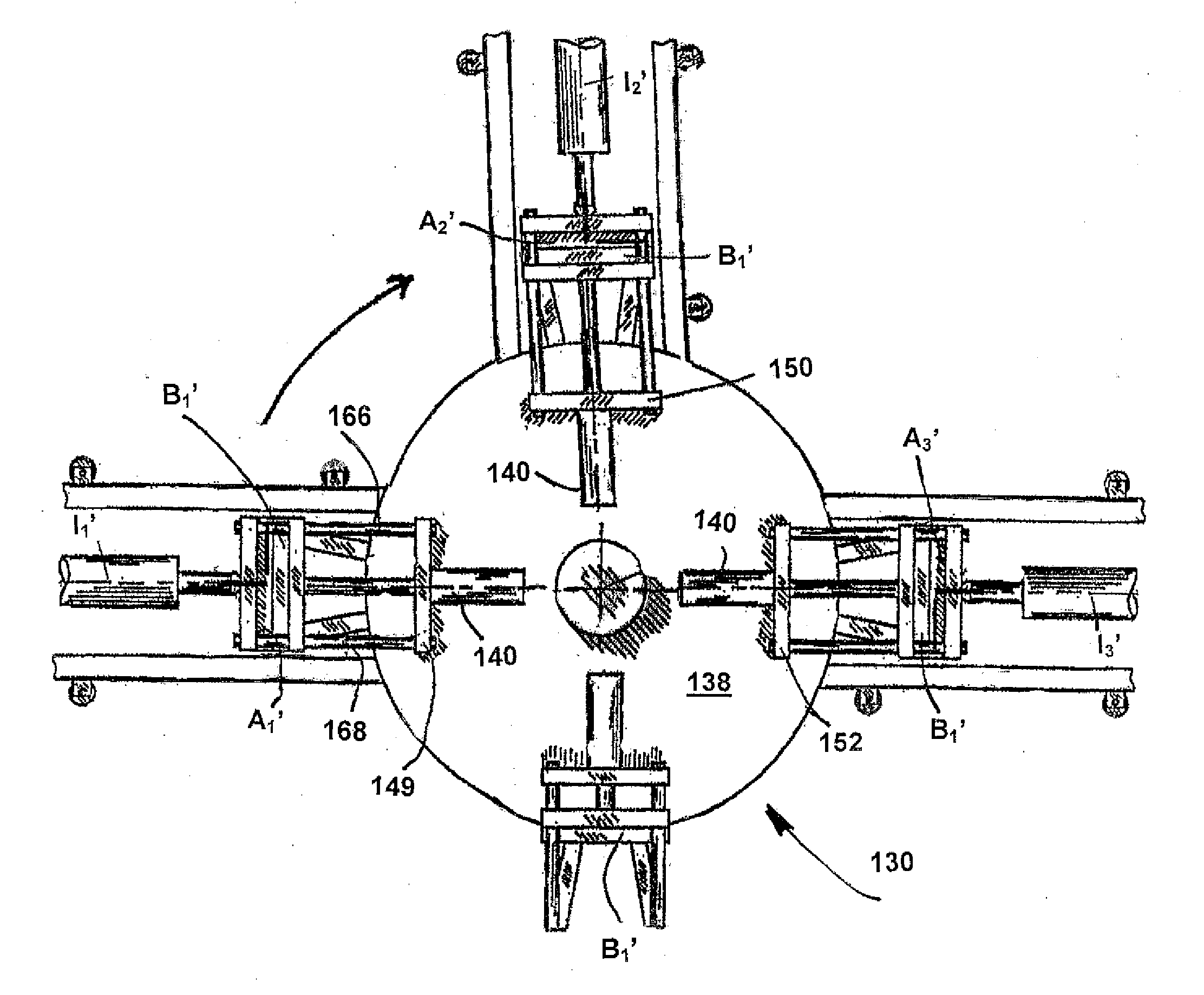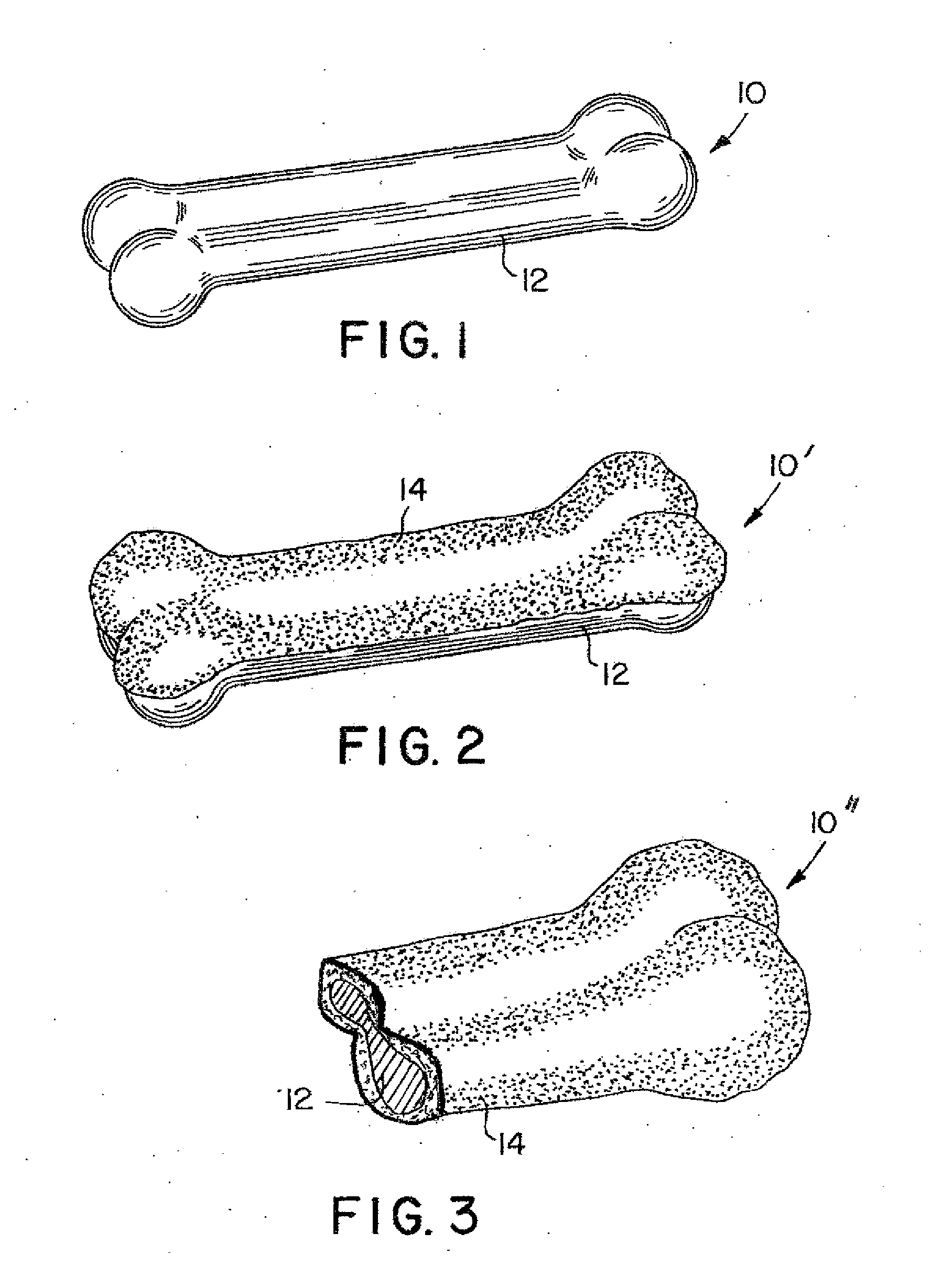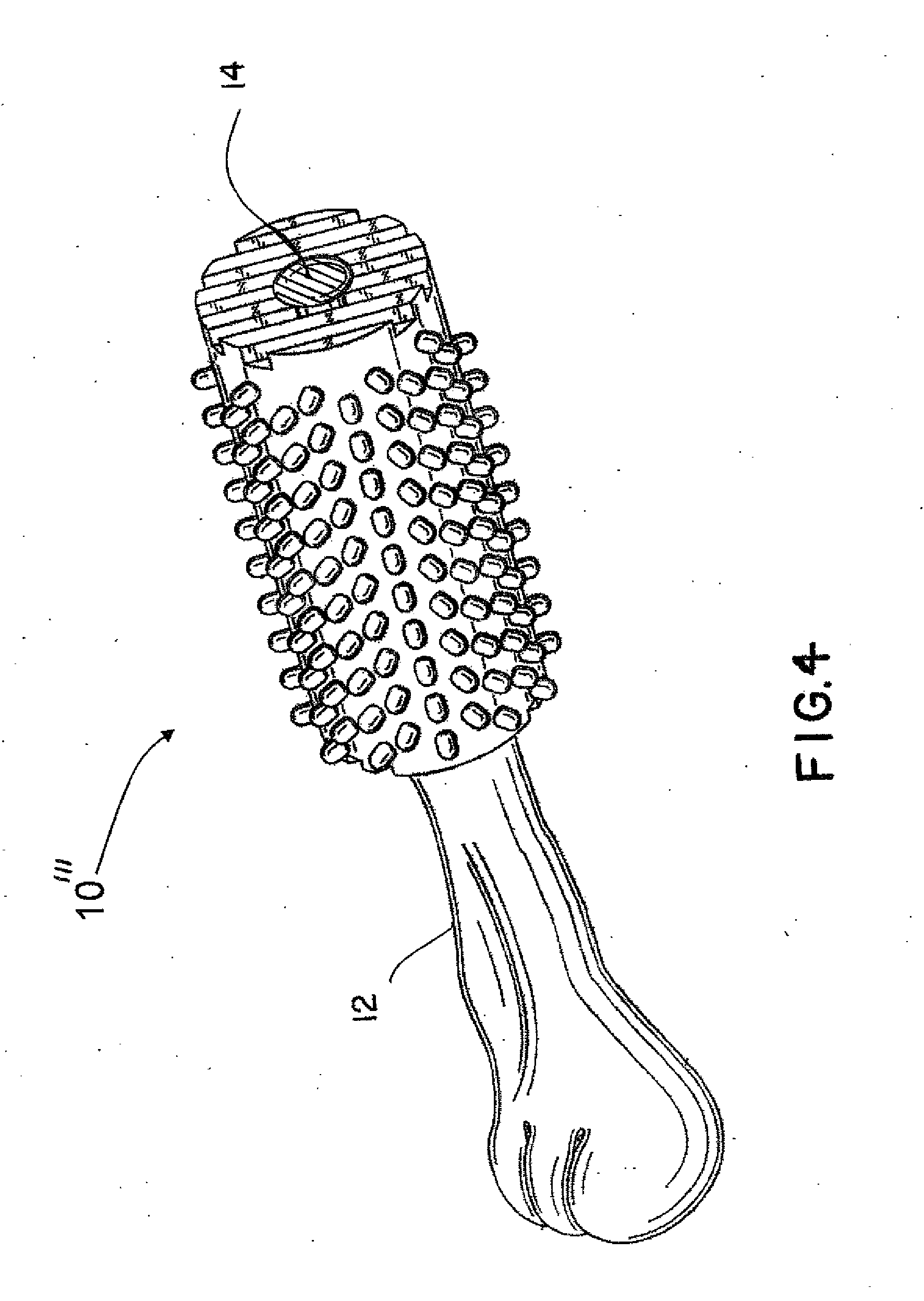Processes For Forming Multi-Layered Pet Treats
a pet treat and multi-layer technology, applied in the field of pet treats or chews, can solve the problems of inability to chew on hard substances, insufficient teeth development of young dogs, and loss of teeth of old dogs,
- Summary
- Abstract
- Description
- Claims
- Application Information
AI Technical Summary
Benefits of technology
Problems solved by technology
Method used
Image
Examples
Embodiment Construction
[0031] In accordance with the present invention, a method of manufacturing a multi-component animal chew or pet treat is disclosed. Pet treats and animal chews are popular items in today's homes and are generally molded of edible compositions in high volume production processes using plastic-type melt processing methods and equipment. In the past, a single composition of uniform construction 10 (see FIG. 1) was molded to shape, however, to provide greater diversity for the pet and longer life of the treat, it has become desirable to offer multi-component treats. Such a treat or chew may comprise two or more materials which may differ in some physical, optical, nutritional, sensual, functional or compositional property, wherein the multiplicity of materials may be formed to lie adjacent one another in layered, surrounding, partially surrounding, abutting or interlocked fashion.
[0032] A difference in optical property may be understood herein as a difference in, e.g., color, shape or ...
PUM
 Login to View More
Login to View More Abstract
Description
Claims
Application Information
 Login to View More
Login to View More - R&D
- Intellectual Property
- Life Sciences
- Materials
- Tech Scout
- Unparalleled Data Quality
- Higher Quality Content
- 60% Fewer Hallucinations
Browse by: Latest US Patents, China's latest patents, Technical Efficacy Thesaurus, Application Domain, Technology Topic, Popular Technical Reports.
© 2025 PatSnap. All rights reserved.Legal|Privacy policy|Modern Slavery Act Transparency Statement|Sitemap|About US| Contact US: help@patsnap.com



